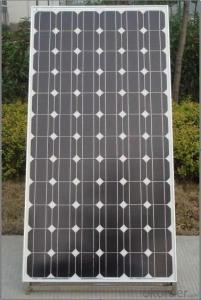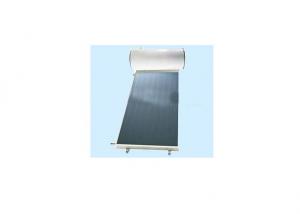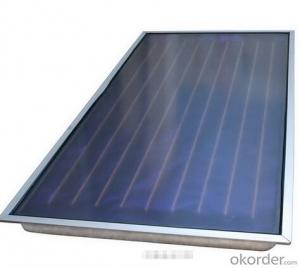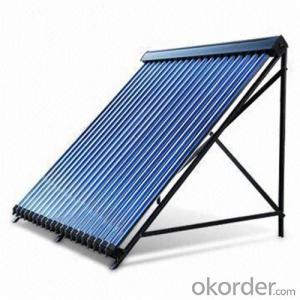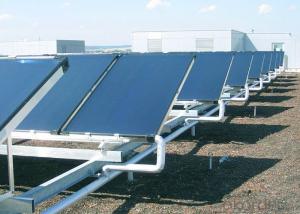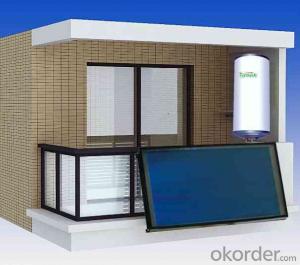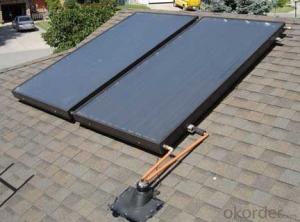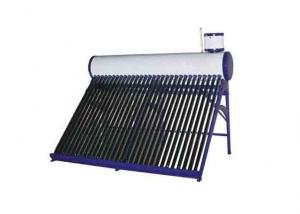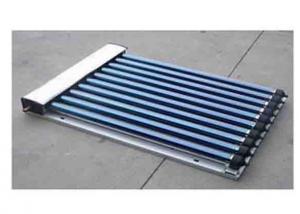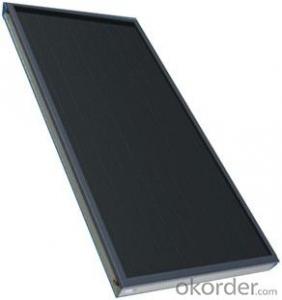Solar Photovoltaic Monocrystalline Series Panels
- Loading Port:
- Tianjin
- Payment Terms:
- TT OR LC
- Min Order Qty:
- 1 pallet
- Supply Capability:
- 100000000 pallet/month
OKorder Service Pledge
OKorder Financial Service
You Might Also Like
Product Description:
Solar Monocrystalline Series Panels
Introduction of Solar Monocrystalline Series Panels
CNBM Solar photovoltaic (PV) Panel is designed for large electrical power requirements. It is the optimal choice for both on-grid and off-grid power systems. CNBM Solar panel offers high performance of power per square foot of solar array. Monocrystalline silicon(c-Si): often made using the Czochralski process. Single-crystal wafer cells tend to be expensive, and because they are cut from cylindrical ingots, do not completely cover a square solar cell module without a substantial waste of refined silicon. Hence most c-Si panels have uncovered gaps at the four corners of the cells.
Characteristics of Solar Monocrystalline Series Panels
I Solar Cell : High efficiency crystalline solar cell. Even if under the weak light, the solar module can produce maximum power output.
II Tempered glass (toughened glass): Anti-reflecting coating and high transmission rate glass increase the power output and mechanical strength of solar module.
III EVA and TPT: Using high quality EVA and TPT to prevent destroying and water.
IV AI frame: Without screw, corner connection. 6 holes on the frame can be installed easily.
V Junction box: Multi function junction box with water proof.
VI Long lifetime: ≥25 years; Less power decrease
VII Good performance of preventing from atrocious weather such as wind and hails.
VIII Resisting moisture and etching effectively, not effected by geology.
Standard Test Conditions of Solar Monocrystalline Series Panels
The opto-electrical specifications shown below are stabilized values being measured at Standard Test Conditions, Irradiance: 1000W/m2, Spectrum: AM1.5 at 25°C, The info below is subject to manufacturing tolerances. Where appropriate minutes of measurement are available and are used for the dimensioning of the installation.
Advantages of Solar Monocrystalline Series Panels
• CNBM Solar performance guarantees for 25 years
• 12 years guarantee for workmanship
• Timeliness of delivery
CNBM International Corporation's products including Monocrystalline Solar Panel, Polycrystalline Solar Panel have received and enjoyed famous reputation in many countries and regions in the world .As a solar panel supplier in China, we strive to provide our customers with excellent service, superior products and unmatched value.
Characteristics of Solar Monocrystalline Series Panels
Max Power Voltage Vmp (V) | 18.4V | 17.6V |
Max Power Current Imp (A) | 6.52A | 7.39A |
Open Circuit Voltage Voc (V) | 23.0V | 22.2V |
Short Circuit Current Isc (A) | 6.97A | 7.90A |
Max Power Pm (W) | 120W | 130W |
Temperature Coefficient of Cells
NOCT | 47℃±2℃ |
Temperature Coefficients of Isc (%/℃) | 0.064 |
Temperature Coefficients of Voc (%/℃) | -0.33 |
Temperature Coefficients of Pmp (%/℃) | -0.45 |
Mechanical Data Solar Monocrystalline Series
Power | 120W/130W |
Dimension | 1190/1470×670×30mm |
Weight | 9.5kg/11.7kg |
Tolerance | ±3% |
The dimension of the modules can be changed according to the demand of clients
Limits
Operating Temperature | –40 °C to +85°C |
Storage Temperature | –40 °C to +85°C |
Max System Voltage | 700V |
Guarantee Solar Monocrystalline Series Panels
Products Guarantee | 10 yrs free from defects in materials and workmanship |
Performance Guarantee | No less than 90% within 10yrs and no less than 80% within 25yrs |
Certificates | IEC, ISO, TUV, CE |
FAQ
We have organized several common questions for our clients,may help you sincerely:
1. What’s price per watt?
A: It’s depends on the quantity, delivery date and payment terms of the order. We can talk further about the detail price issue. Our products is high quality with lower price level.
2. Can you tell me the parameter of your solar panels?
We have different series of cells with different power output, both from c-si to a-si. Please take our specification sheet for your reference.
3. How do you pack your products?
We have rich experience on how to pack the panels to make sure the safety on shipment when it arrives at the destination.
4. Can you do OEM for us?
Yes, we can.
5. How long can we receive the product after purchase?
In the purchase of product within three working days, We will arrange the factory delivery as soon as possible. The perfect time of receiving is related to the state and position of customers. Commonly 7 to 10 working days can be served.
- Q:Can solar collectors be used for heating historical sites?
- Yes, solar collectors can be used for heating historical sites. Solar thermal systems, such as solar water heaters or solar air heaters, can be installed to harness the sun's energy and provide heat for historical buildings. This eco-friendly and cost-effective solution can help preserve the authenticity of these sites while reducing their carbon footprint.
- Q:Can solar collectors be used for heating universities?
- Yes, solar collectors can be used for heating universities. Solar thermal systems, such as solar water heaters and solar air heating systems, can be installed to provide hot water and space heating for university buildings. These systems use the sun's energy to heat water or air, which can then be used for various heating purposes throughout the university campus. Solar collectors are a sustainable and cost-effective solution for universities to reduce their carbon footprint and dependence on traditional heating methods.
- Q:How do solar collectors affect the comfort level of a building?
- Solar collectors can significantly improve the comfort level of a building by harnessing the sun's energy to provide heating and hot water. This reduces the reliance on traditional heating systems, resulting in lower energy costs and a more sustainable and environmentally friendly solution. Additionally, solar collectors can help maintain a consistent indoor temperature, enhancing the overall comfort and well-being of occupants.
- Q:Can solar collectors be used in combination with heat pumps?
- Solar collectors can be combined with heat pumps, creating what is known as a solar thermal heat pump system. In this setup, thermal energy from the sun is captured by the solar collectors and then transferred to a heat pump. The heat pump amplifies this captured heat and transfers it to a space heating or water heating system. The combination of solar collectors and heat pumps enhances the efficiency and sustainability of the system. The solar collectors serve as an initial source of renewable energy, reducing reliance on fossil fuels. The heat pump then maximizes the overall efficiency of the system by amplifying and enhancing the captured heat. This combination is particularly advantageous in areas with varying weather conditions. On sunny days, the solar collectors contribute a significant amount of thermal energy, reducing the load on the heat pump. On less sunny days, the heat pump compensates for the lower solar input by utilizing its own energy efficiency to maintain the desired temperature. Moreover, integrating solar collectors with heat pumps can result in cost savings. The solar energy captured by the collectors offsets the electricity consumption of the heat pump, leading to reduced energy bills. In conclusion, combining solar collectors with heat pumps is a practical and efficient solution for harnessing renewable energy and providing effective heating and hot water systems. This combination offers both environmental and economic benefits, making it an appealing choice for homeowners and businesses alike.
- Q:How do solar collectors perform in areas with high pollution levels?
- Despite high pollution levels, solar collectors can still maintain efficient performance, albeit with slight effects. The primary consequence of pollution on solar collectors is the diminished amount of sunlight reaching their surfaces. This is due to the presence of pollutants like smog, dust, and particulate matter in the air, which obstruct and disperse sunlight. The decreased sunlight reaching the collectors can result in a decline in overall energy output. However, advancements in solar technology have facilitated the creation of more productive solar collectors that can generate a substantial amount of energy even in polluted areas. One method of mitigating the effects of high pollution levels on solar collectors is regular cleaning and maintenance. By ensuring that the collectors remain clean and devoid of dust and debris, their performance can be optimized. Additionally, adjusting the orientation and tilt angle of the collectors can maximize sunlight absorption and compensate for the reduced sunlight caused by pollution. It is important to note that the impact of pollution on solar collectors can vary depending on the type and severity of pollution, as well as the specific design and efficiency of the collectors. In certain cases, pollution can have a more significant influence on the performance of solar collectors, particularly if the pollution contains heavy metals or chemicals that can accumulate on the surface of the collectors. Overall, despite the slight reduction in performance caused by high pollution levels, solar collectors remain a viable and sustainable energy source in areas with such conditions. With proper maintenance and efficient design, solar collectors can continue to harness the power of the sun and contribute to renewable energy generation, even in polluted environments.
- Q:Are there any zoning restrictions for solar collector installations?
- Yes, there are zoning restrictions for solar collector installations. These restrictions vary depending on the location and local regulations. In some areas, there may be height restrictions, setback requirements, or aesthetic guidelines that need to be followed when installing solar collectors. It is advised to check with the local zoning authority or consult a professional to understand the specific zoning restrictions in a particular area.
- Q:Can solar collectors be used for heating train stations and public transportation terminals?
- Yes, solar collectors can be used for heating train stations and public transportation terminals. Solar collectors, also known as solar thermal collectors, absorb sunlight and convert it into heat energy. This heat can then be used for various applications, including space heating. Train stations and transportation terminals are typically large buildings with high heating demands. By installing solar collectors on the roof or nearby areas, it is possible to harness the sun's energy and use it to heat these facilities. There are different types of solar collectors that can be used for this purpose, such as flat-plate collectors and evacuated tube collectors. These collectors consist of a series of tubes or panels that contain a heat transfer fluid. When sunlight hits the collectors, the fluid is heated and then circulated through a heat exchanger, which transfers the heat to the building's heating system. Using solar collectors for heating train stations and public transportation terminals offers several advantages. Firstly, it is a renewable and sustainable energy source, reducing reliance on fossil fuels and minimizing greenhouse gas emissions. Secondly, it can help reduce energy costs, as the sun's energy is free and abundant. Moreover, solar collectors require minimal maintenance and have a long lifespan, making them a cost-effective heating solution in the long run. However, there are some considerations to take into account when using solar collectors for heating large facilities. The size and number of collectors need to be carefully calculated to match the heating demands of the train station or terminal. Additionally, the positioning and orientation of the collectors should be optimized to maximize sunlight exposure and energy absorption. In conclusion, solar collectors can definitely be used for heating train stations and public transportation terminals. They provide a sustainable and cost-effective heating solution, helping to reduce environmental impact and energy costs. With proper design and installation, solar collectors can effectively meet the heating needs of these facilities.
- Q:What is the cost of installing a solar collector?
- The cost of installing a solar collector can vary depending on various factors such as the size of the collector, the complexity of the installation, and the region where it is being installed. On average, the cost can range from several thousand dollars to tens of thousands of dollars. It is recommended to consult with a solar installation professional to get an accurate estimate based on your specific needs and circumstances.
- Q:Can solar collectors be used for heating air conditioning systems?
- Yes, solar collectors can be used for heating air conditioning systems. Solar thermal collectors can be used to heat water or air, which can then be used for heating purposes, including air conditioning. This method of using solar energy for heating air conditioning systems is known as solar heating and cooling.
- Q:What is the effect of bird droppings on solar collectors?
- Bird droppings can have a negative effect on solar collectors as they can reduce the efficiency of the panels by blocking sunlight and reducing the amount of energy they can produce. Additionally, bird droppings can corrode the surface of the panels over time, potentially causing damage that may require cleaning or repairs.
1. Manufacturer Overview |
|
|---|---|
| Location | |
| Year Established | |
| Annual Output Value | |
| Main Markets | |
| Company Certifications | |
2. Manufacturer Certificates |
|
|---|---|
| a) Certification Name | |
| Range | |
| Reference | |
| Validity Period | |
3. Manufacturer Capability |
|
|---|---|
| a)Trade Capacity | |
| Nearest Port | |
| Export Percentage | |
| No.of Employees in Trade Department | |
| Language Spoken: | |
| b)Factory Information | |
| Factory Size: | |
| No. of Production Lines | |
| Contract Manufacturing | |
| Product Price Range | |
Send your message to us
Solar Photovoltaic Monocrystalline Series Panels
- Loading Port:
- Tianjin
- Payment Terms:
- TT OR LC
- Min Order Qty:
- 1 pallet
- Supply Capability:
- 100000000 pallet/month
OKorder Service Pledge
OKorder Financial Service
Similar products
New products
Hot products
Hot Searches
Related keywords
